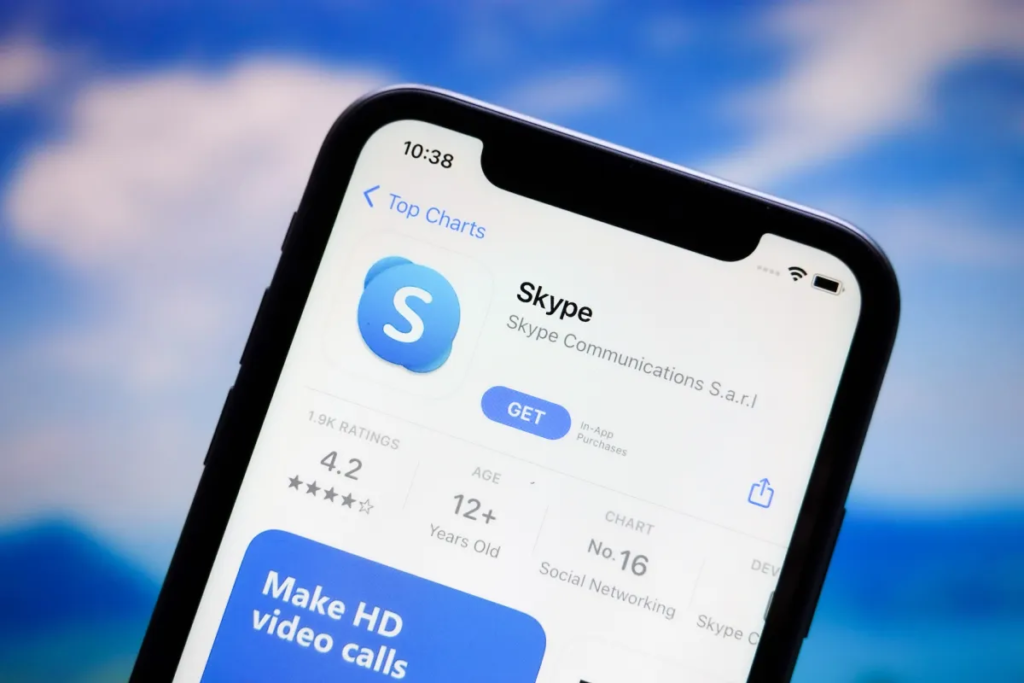After 23 years of revolutionizing internet-based communication, Skype is officially retiring. Microsoft, which acquired Skype in 2011, announced that the iconic messaging and calling app will be shut down on May 5, 2025, as the company shifts its focus entirely to Microsoft Teams. This marks the end of an era for a platform that once boasted 300 million users and pioneered voice and video calls over the internet. But what does this mean for Skype’s remaining users, and why is Microsoft making this move now? Let’s dive into the details.
A Brief History of Skype
Launched in 2003, Skype was one of the first platforms to enable voice calls over the internet, transforming how people communicated globally. Its innovative technology allowed users to make free voice and video calls, send messages, and share files, making it a household name long before smartphones and apps like WhatsApp and Zoom became mainstream.
Microsoft acquired Skype in 2011 for $8.5 billion, hoping to integrate it into its ecosystem. At its peak in 2013, Skype had over 300 million users. However, as competitors emerged and consumer preferences shifted, Skype’s user base dwindled. By 2023, Microsoft reported just 36 million daily active users—a far cry from its heyday.
Why is Microsoft Shutting Down Skype?
The decision to retire Skype is part of Microsoft’s broader strategy to consolidate its communication tools under Microsoft Teams. Teams, which debuted in 2016, was initially positioned as a competitor to Slack, offering a platform for workplace collaboration. Over time, however, Teams evolved into a comprehensive communication tool, integrating chat, video calls, file sharing, and third-party app integrations.
Key Reasons for the Shift:
- Streamlining Resources: Maintaining two separate platforms (Skype and Teams) is resource-intensive. By focusing on Teams, Microsoft can allocate more resources to innovation and development.
- Declining User Base: Skype’s user numbers have plateaued, while Teams has grown exponentially, now boasting 320 million users.
- Market Trends: The rise of smartphones and apps like WhatsApp, Zoom, and FaceTime has made Skype less relevant for personal use.
- Integration with Microsoft Ecosystem: Teams is deeply integrated with Microsoft 365, making it a more cohesive solution for both personal and professional use.
What Happens to Skype Users?
Skype users have until May 5, 2025, to decide how to proceed. Microsoft is offering two main options:
1. Migrate to Microsoft Teams
Users can transfer their contacts, chat history, and data to Teams. Microsoft has made this process seamless, allowing users to log into Teams with their Skype credentials and automatically migrate their data. Teams offers additional features like calendar integration, collaborative workspaces, and advanced meeting tools, making it a more versatile platform.
2. Export Your Data
For those who prefer not to switch to Teams, Skype provides a built-in export tool to download chat history, contacts, and other data. However, there’s no direct way to import this data into other platforms, so users will need to manually save important information.
If no action is taken by May 5, Microsoft will retain user data until the end of 2025 before permanently deleting it.
What’s Changing with Teams?
While Teams is a powerful platform, it’s important to note that it lacks some features that were central to Skype’s appeal:
- Phone Call Functionality: Teams Free does not support calling mobile or landline numbers, a hallmark feature of Skype.
- Skype Numbers: Users will no longer be able to purchase or renew Skype phone numbers, though existing credits can still be used via a Skype Dial Pad integrated into Teams.
Microsoft argues that these changes reflect shifting consumer trends. With the widespread availability of mobile data plans, the need for traditional telephony services has diminished.
The Blurring Line Between Personal and Professional Use

One of the most interesting aspects of this transition is how it highlights the convergence of personal and professional communication tools. Skype began as a consumer product but gained traction in the business world. Conversely, Teams started as a business tool but is now being positioned for personal use.
However, some users may find Teams’ business-oriented branding and features less appealing for casual, personal communication. Microsoft is banking on the familiarity of its ecosystem—tools like Word, Excel, and PowerPoint are used in both personal and professional contexts—to ease this transition.
The Legacy of Skype
Skype’s retirement marks the end of a pioneering platform that changed how we communicate. It introduced millions to the concept of internet-based calls, paving the way for modern apps like Zoom and WhatsApp. While its user base has declined, its impact on the tech industry is undeniable.
What’s Next for Microsoft Teams?
Microsoft is betting big on Teams, not just as a workplace tool but as a comprehensive communication platform for all aspects of life. The company has already rebuilt Teams from the ground up, improving performance and adding new features. With Skype out of the picture, Microsoft can focus entirely on making Teams the go-to app for both personal and professional communication.
A New Chapter in Digital Communication
The shutdown of Skype is a bittersweet moment for many who grew up using the platform to stay connected with loved ones. However, it also represents progress. By consolidating its efforts into Teams, Microsoft is positioning itself to compete in the rapidly evolving world of digital communication.
For Skype users, the next few months will be a time of transition. Whether you choose to migrate to Teams or explore other platforms, one thing is clear: the way we communicate is constantly evolving, and Microsoft is determined to stay at the forefront of this change.








